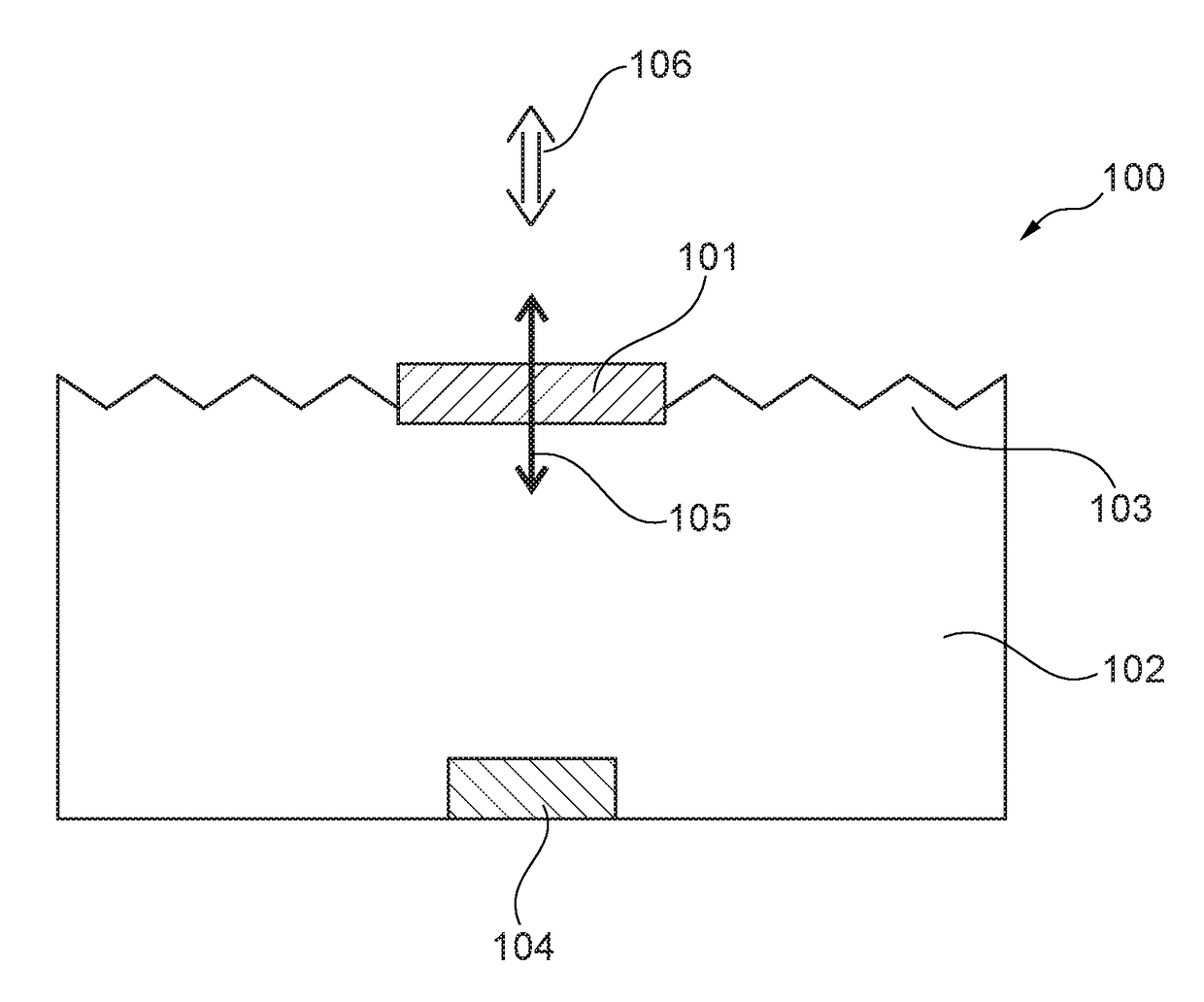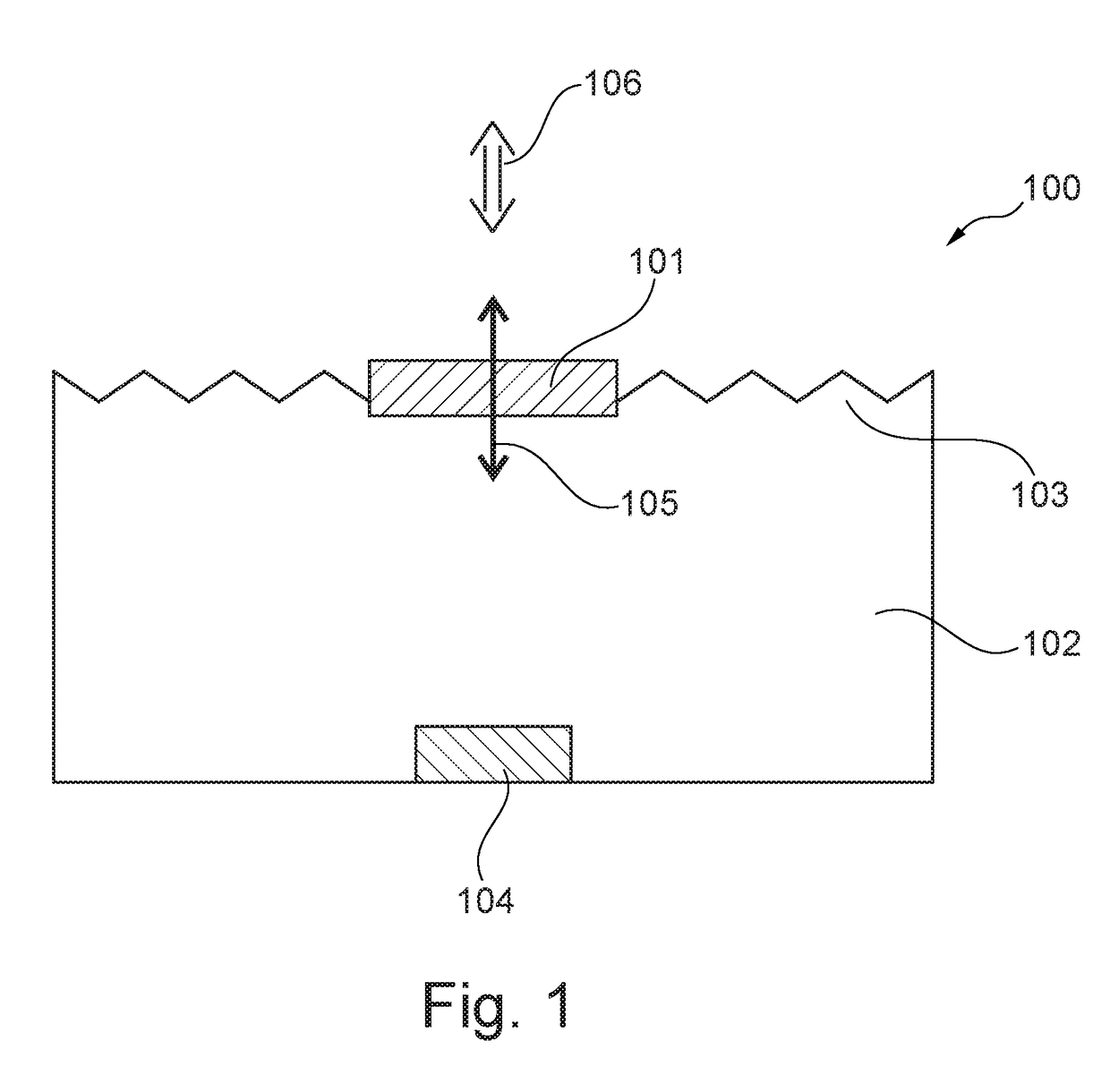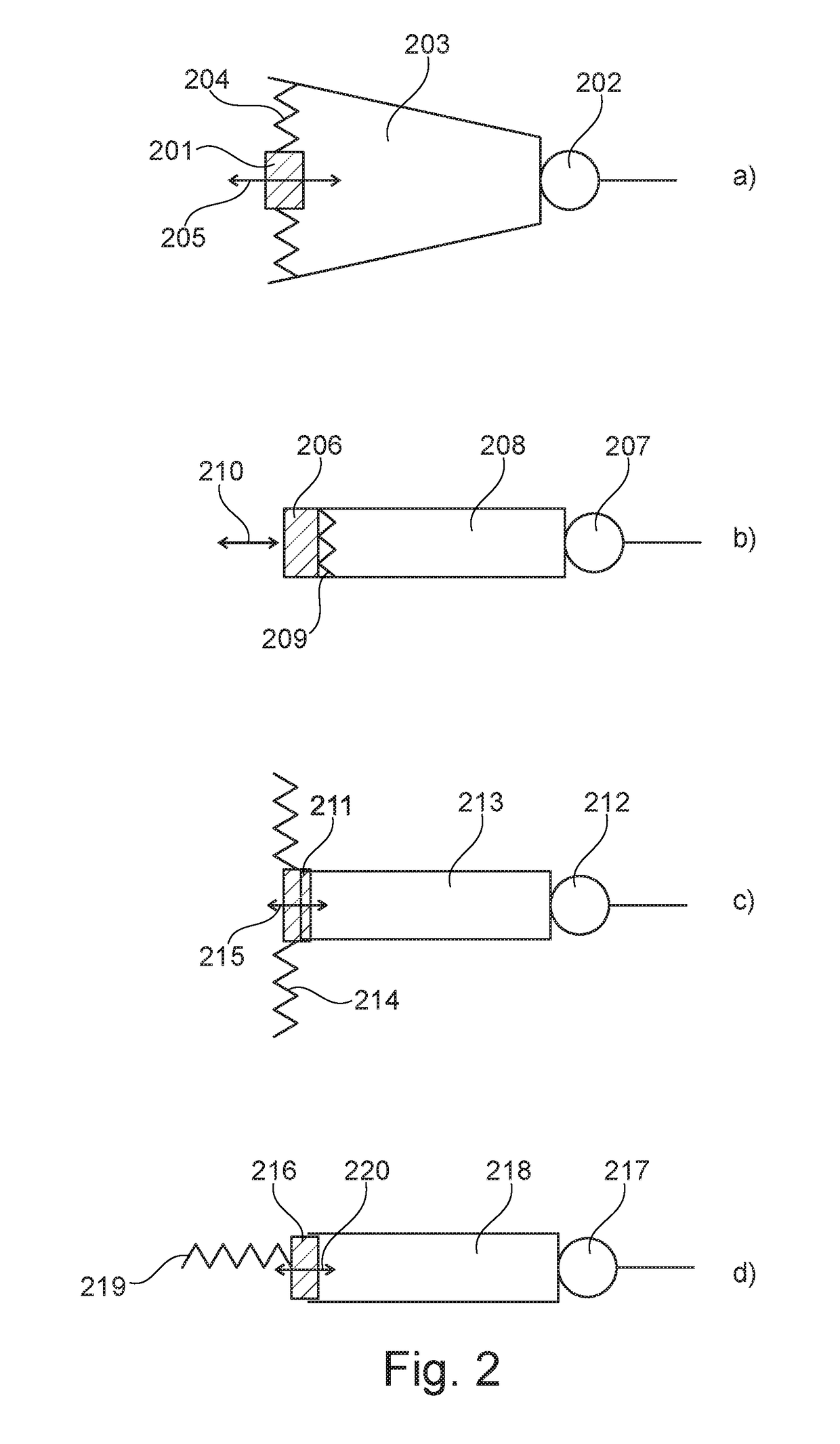Vibration sensor with low-frequency roll-off response curve
- Summary
- Abstract
- Description
- Claims
- Application Information
AI Technical Summary
Benefits of technology
Problems solved by technology
Method used
Image
Examples
embodiment 400
[0067]Turning now to FIG. 4 an embodiment 400 comprising a first acoustical opening 408 and a second acoustical opening 406 is depicted. The first acoustical opening 408 provides a predetermined low-frequency roll-off response curve of the vibration sensor, whereas the second acoustical opening 406 provides a predetermined damping of the mechanical resonance frequency of the vibration sensor. In FIG. 4 the first acoustical opening 408 connects the pressure transmitting volume 402 to a substantially closed rear volume 403. Alternatively, the first acoustical opening 408 could connect the pressure transmitting volume 402 (front volume) with the exterior of the vibration sensor. The second acoustical opening 406 is provided through the moveable mass 404. Alternatively or in combination therewith, the second acoustical opening 406 could be provided through the resilient suspension member 405 to which the moveable mass 404 is secured. The moveable mass 404 is adapted to move as indicated...
embodiment 700
[0072]FIG. 7 shows an embodiment 700 with two moveable masses 703, 706 being suspended in respective resilient suspension members 704, 707. As depicted in FIG. 7 the moveable masses 703, 706 are adapted to move in essentially perpendicular directions as indicated by the respective arrows 705, 708. Thus, the vibration sensor depicted in FIG. 7 is sensitive to vibrations in two perpendicular directions.
[0073]In order to provide a predetermined low-frequency roll-off response curve of the vibration sensor a first acoustical opening 714 is provided between the common pressure transmitting volume 709 and a substantially closed volume 715.
[0074]Second acoustical openings 712, 713 are provided between the common pressure transmitting volume 709 and the respective volumes 701, 702 which are acoustically separated by the wall 711. It should be noted that the wall 711 can optionally be omitted so that volumes 701 and 702 becomes a single volume, and second acoustical openings 712 and 713 act ...
embodiment 800
[0075]Turning now to FIG. 8 a vibration sensor 800 with separate pressure transmitting volumes 809, 812 and separate microphones 810, 813 is depicted. Similar to the embodiment of FIG. 7, the embodiment 800 shown in FIG. 8 comprises two moveable masses 803, 806 being suspended in respective resilient suspension members 804, 807. The moveable masses 803, 806 are adapted to move in essentially perpendicular directions as indicated by the respective arrows 805, 808.
[0076]Again, second acoustical openings 814, 815 are provided between the separated pressure transmitting volumes 812, 809 and the respective volumes 801, 802 which are acoustically separated by the wall 811. Similar to FIG. 7 the wall 811 can optionally be omitted so that volumes 801 and 802 becomes a single volume, and second acoustical openings 814 and 815 act as a single acoustical opening.
[0077]In order to provide a predetermined low-frequency roll-off response curve of the vibration sensor first acoustical openings 816...
PUM
 Login to View More
Login to View More Abstract
Description
Claims
Application Information
 Login to View More
Login to View More - R&D
- Intellectual Property
- Life Sciences
- Materials
- Tech Scout
- Unparalleled Data Quality
- Higher Quality Content
- 60% Fewer Hallucinations
Browse by: Latest US Patents, China's latest patents, Technical Efficacy Thesaurus, Application Domain, Technology Topic, Popular Technical Reports.
© 2025 PatSnap. All rights reserved.Legal|Privacy policy|Modern Slavery Act Transparency Statement|Sitemap|About US| Contact US: help@patsnap.com



